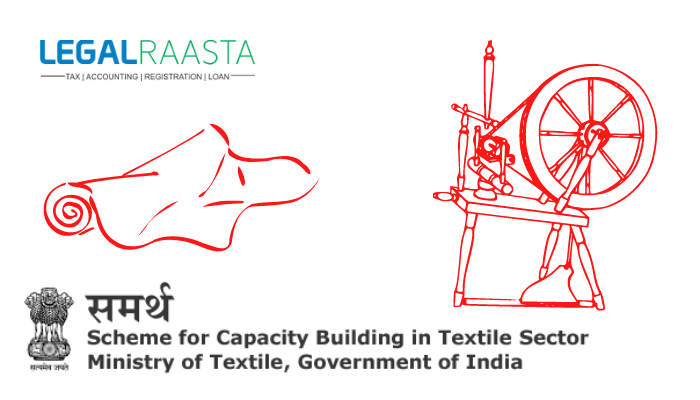Cash Reserve Ratio
The Cash Reserve Ratio (CRR) is one of the several monetary policy tools that the RBI use to manage the economy’s money supply. The Reserve Bank of India (RBI) is our country’s central bank, in charge of managing money flow to commercial banks, non-bank financial companies (NBFCs), and other lenders, who in turn supply money to the rest of the country.
What exactly is CRR?
In layman’s terms, the Cash Reserve Ratio is a percentage of cash that all banks must retain as a deposit with the RBI. This proportion is set by the RBI and is adjusted by the central bank from time to time.
What is the formula for calculating CRR?
There is no formula for calculating the cash reserve ratio. CRR is determined as a proportion of net demand and time liabilities in technical terms (NDTL). The aggregate savings account, current account, and fixed deposit balances held by a bank are referred to as NDTL in banking. So, whatever the total sum is, 4 percent of the total balances in all three categories must be retained with the RBI, according to current requirements.
What is the reason behind for Cash Reserve Ratio?
The basic goal of the cash reserve ratio is to offer some form of liquid cash against depositors’ funds so that the bank does not run out of cash to meet depositors’ needs. There are more rules and regulations to follow in this situation.
Banks profit from the loans they make to us as well as the interest we pay on those loans. In a perfect world, banks would seek to lend as much as possible in order to maximise profits. However, this is problematic because if banks lend out the majority of their capital, they may struggle to meet the requirements in the unlikely event of a rapid withdrawal rush by consumers.
The cash reserve ratio serves a variety of objectives. Controlling the economy’s liquidity and interest rates is one of them. Keep in mind that CRR is only one tool in the toolbox, and it cannot address the liquidity situation on its own. Other instruments include the statutory liquidity ratio (SLR), the repo rate, the reverse repo rate, open market operations, and others. A liquidity crisis can occur for a variety of reasons, both domestic and international. CRR rates have been lowered or raised several times in response to changing economic situations.
It’s vital to understand that banks don’t get paid interest on the money they park with the RBI under CRR.
Meaning of Cash Reserve Ratio
If the CRR is excessively high, banks are required to deposit more money with the RBI and less with themselves. This means they don’t have as much money to lend or meet depositor standards. This, in turn, shows that the economy’s liquidity is low.
It’s also true in the other direction. If the CRR limitations are eased, it suggests the RBI is attempting to inject liquidity into the economy by leaving more money in banks. Because the money supply and interest rates in the economy are inextricably linked, it’s safe to conclude that CRR has an effect on interest rates.
The Benefits of CRR
- CRR aids in the management of total liquidity by spreading money circulation throughout the economy.
- The CRR rate is determined by the amount of money available in the financial market. When the monetary supply rises, the RBI immediately raises the CRR to eliminate the excess funds. Similarly, in the event of a liquidity crisis or a reduction in the economy’s monetary supply, the RBI will lower the CRR rate to allow more money to flow into the market.
- CRR assists commercial banks in strengthening and maintaining their solvency.
- It assures that the liquidity system in all commercial banks is consistent and adequately maintained.
- The CRR rate allows the RBI to control and coordinate the credit held by banks, allowing for a smooth supply of cash and credit in the economy.
- Commercial banks can give additional advances to borrowers when the CRR rate is cut by the RBI, which enhances the flow of cash to the general population.
- When market interest rates fall sharply, CRR helps to improve the decreasing rate by absorbing liquidity.
- CRR plays a positive role in alleviating the financial climate when the currency is in surplus.
- The application of the cash reserve ratio is more effective than the use of other monetary instruments such as Market Stabilization Scheme bonds. Specifically, MSS bonds require a long time to regulate the country’s liquidity system.
Effects Of CRR
- First and foremost, CRR’s main purpose is to ensure that a little amount of money is always available against deposits. The RBI would also be empowered to oversee interest rates and total liquidity in the country.
- When the CRR is low, banks prefer it since they must maintain the specified fund ratio with the RBI without earning any interest on the reserved funds, which means the money is retained for free.
- The increasing CRR rate indicates that banks’ fund lending capacity is limited. As a result, banks want to open additional deposit accounts. Furthermore, banks will raise interest rates, discouraging borrowers from seeking loans because higher interest rates imply higher loan costs.
- If a depositor has made a stock investment in a bank, a higher CRR rate indicates that the bank will have lesser margins.
- Similarly, when the CRR rate is low, banks have more money to invest in other firms, lowering loan interest rates.
- A low cash reserve ratio also suggests that the banking system’s money supply will grow. Inflationary pressures are amplified by an increased money supply.
Conclusion
The Cash Reserve Ratio, or CRR, is a law that most nations’ central banks use to determine the minimum percentage of client deposits and currency that each commercial bank must retain as reserves. The required reserves are often held in the form of deposits with the central bank or cash physically housed in bank vaults. The Reserve Requirement is another name for the CRR.
The CRR is frequently utilized by the central bank as a monetary policy instrument to impact the country’s interest and borrowing rates by changing the money available for banks to lend.
When the government has to inject cash into the system, the CRR rate is lowered, allowing banks to lend to a larger number of enterprises and industries for investment purposes. Lowering the CRR also enhances the economy’s growth rate.
Related posts:










